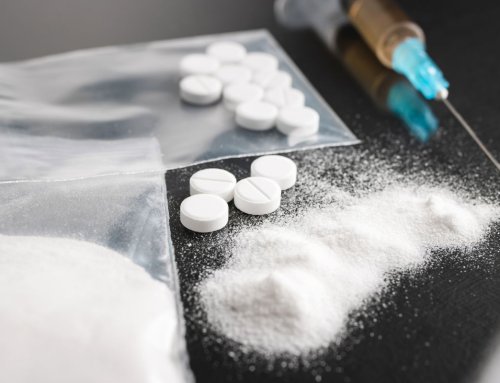How long does fentanyl stay in your system? This is one of the most common questions we receive at Taste Recovery from individuals working to overcome fentanyl addiction. As a controlled substance, fentanyl can take hold of a user in ways that other substances simply can’t. And as anyone who has struggled with fentanyl knows, kicking a fentanyl habit can be an intense, uphill climb.
At Taste Recovery, we have worked with countless fentanyl users on their sobriety journey. The effects of fentanyl abuse are both physically and emotionally challenging, and understanding its presence in the body is a crucial step toward recovery. In this explainer, we will unpack the connection between fentanyl and your metabolism so you can better understand how it moves through your body.
What Is Fentanyl and How Is It Metabolized?
What is fentanyl?
Fentanyl is a synthetic opioid that is up to 100 times more potent than morphine and 50 times stronger than heroin. Originally developed for pain management in cancer patients, it has become a significant concern due to its widespread misuse. The drug is often prescribed in controlled settings via patches, lozenges, or injections, but illicit versions—frequently mixed with other drugs—are a leading cause of overdose deaths in the U.S.
Fentanyl metabolism explained
Once ingested, fentanyl is primarily metabolized in the liver through enzymes like CYP3A4. This process transforms fentanyl into its main metabolite, norfentanyl, which is then excreted in urine. The drug’s metabolism is influenced by individual factors, including liver function and genetic enzyme activity, which can significantly affect detection times.
How Long Does Fentanyl Stay in Your System?
The timeline for fentanyl clearance from the body varies but is typically determined by its half-life, which ranges from 3 to 12 hours for medical use. For illicit or chronic users, the drug may linger longer due to cumulative dosing. Most users will eliminate fentanyl from their system within 72 hours, but certain factors can extend this timeframe.
Factors influencing detection times include:
- Dosage and frequency of use: Chronic or high-dose use leads to accumulation in the body.
- Metabolic rate: Individuals with slower metabolisms may take longer to clear the drug.
- Age and body composition: Older adults and those with higher body fat percentages may retain fentanyl longer.
Medical use under a doctor’s supervision typically results in faster clearance, while recreational misuse often leads to prolonged detection periods.
How Long Does Fentanyl Stay in Urine?
Urine tests are one of the most common methods for detecting fentanyl. On average, fentanyl and its metabolites, like norfentanyl, can be detected in urine for 1 to 3 days after the last use. For heavy or chronic users, this window may extend to 4 or more days. Urine testing is particularly effective because it focuses on metabolites, which remain in the body longer than the parent drug. Modern urine assays are highly sensitive, capable of identifying even trace amounts of fentanyl or norfentanyl, ensuring accuracy in both medical and legal settings.
Does Fentanyl Show Up on a Drug Test?
Standard drug tests do not typically detect fentanyl, as it is chemically distinct from other opioids. However, specialized fentanyl assays or extended opioid panels are specifically designed to identify the drug and its metabolites. Testing may be required in various contexts, such as employment screenings, legal cases, or medical monitoring programs. These specialized tests can provide results within a few days, offering a reliable method to confirm fentanyl use in a specific timeframe.
How Long Do You Stay Positive for Fentanyl?
Fentanyl detection windows vary by testing method:
- Urine tests: 1–3 days for most users.
- Blood tests: Detectable for up to 48 hours post-use.
- Hair tests: Trace amounts may remain for up to 90 days, although this method is less common.
Factors such as dosage, frequency of use, and overall health can extend detection periods. Chronic users or individuals with compromised liver function may test positive longer than those with occasional use.
Factors Influencing Fentanyl Detection Times
A variety of factors can influence how long fentanyl remains detectable in the body:
- Genetics: Differences in liver enzyme activity can speed up or slow down drug metabolism.
- Substance interactions: Combining fentanyl with other drugs or alcohol can impact how it is processed.
- Testing sensitivity: Advanced tests can detect smaller amounts of the drug, extending the detection window.
Additionally, hydration levels, physical activity, and overall health play a role in the rate at which fentanyl is metabolized and eliminated.
Conclusion
Understanding how long fentanyl stays in your system is a crucial step toward managing its effects and beginning the recovery process. For anyone battling fentanyl addiction, seeking professional help is vital. At Taste Recovery, we offer a range of resources to support you or your loved one on the journey to sobriety.









